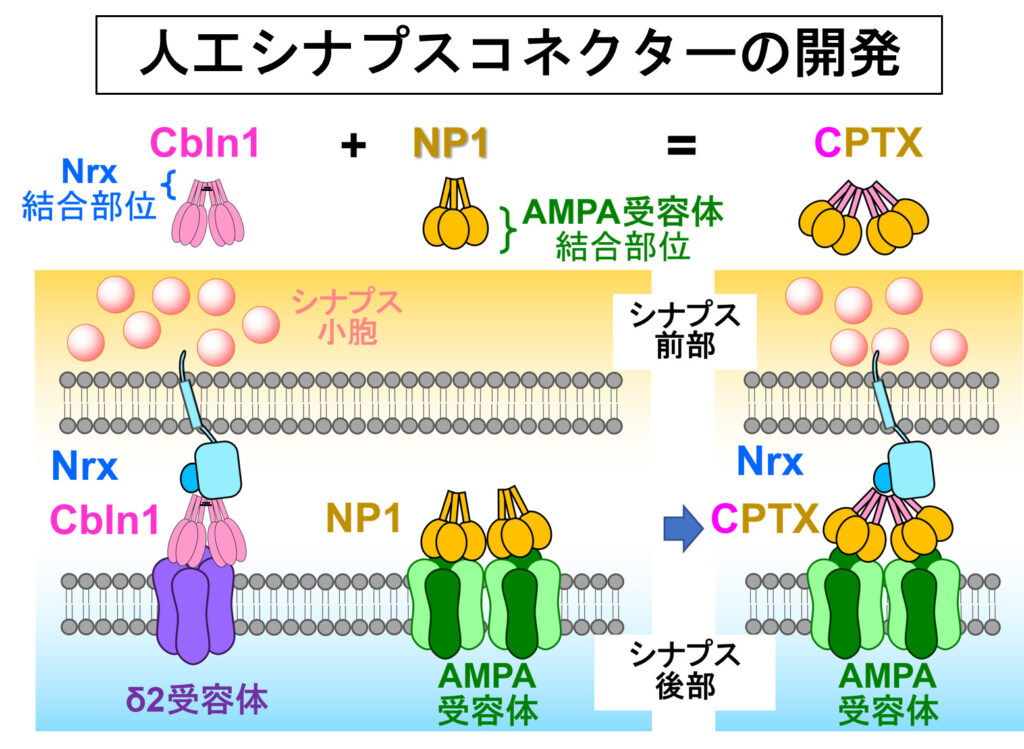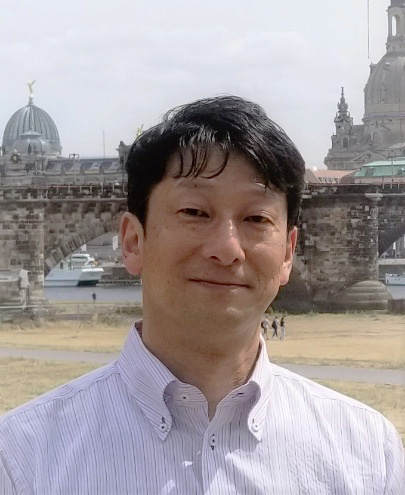Michisuke Yuzaki

氏名Name
Michisuke Yuzaki
所属・職名Affiliation, Title, etc.
Professor
Keio University School of Medicine
Professor & Special Advisor to the Director
Keio University
Human Biology-Microbiome-Quantum Research Center (Bio2Q)
研究室HPWebsite
一言メッセージShort Message
本プロジェクトでの研究概要Outline of the research in this project
In recent years, the concept that many psychiatric and neurological disorders are "synaptopathies," i.e., conditions caused by abnormalities in the number or function of synapses, has become widely accepted. It is now understood that in neurodegenerative diseases such as dementia, as well as in brain and spinal cord injuries, synapses are the first to be damaged, followed by progressive retrograde degeneration of presynaptic neurons. This project aims to develop a novel therapeutic approach by repairing synapses using synthetic synapse organizers and exploiting the intrinsic reservoir function of the nervous system. In collaboration with the Takeuchi team at Aichi Medical University, we will administer synapse organizers to rodent models of subacute and chronic spinal cord injury to activate alternative neural circuits and develop effective rehabilitation strategies. In addition, in collaboration with the Isa team at Kyoto University, we will extend these findings to non-human primate models of spinal cord injury and other teams' models of psychiatric and neurological diseases, ultimately working toward the development of reservoir function enhancement technologies for human applications.

これまで主な研究内容Outline of main research so far
私たちはこれまでに内因性シナプス形成分子(シナプスオーガナイザー)Cbln1とNP1の構造と活性に基づいて人工シナプスオーガナイザーCPTX を開発した。脳・脊髄実質へのCPTX 投与によって小脳失調・アルツハイマー病・脊髄損傷モデルマウスにおいて興奮性シナプスが修復され、それぞれの症状を大幅に改善させることから、シナプスを標的とする治療が可能であることを世界で初めて実証した。興味深いことに、生体に投与されたCPTX は数日で分解され、そのため小脳失調への効果は一過的であるが、脊髄損傷への効果は数ヶ月以上持続した。この原因は、脊髄では運動機能を代替できる下行路や局所回路が存在し、CPTX 投与によってこれらの回路が活動するようになると内因性シナプス形成分子が動員され、代替回路が定着するためであろうと考えられる。このような神経系が本来有するリザバー機能を動員するためのシナプス治療法の開発を目指す。

We previously developed the synthetic synapse organizer CPTX based on the structure and activity of the endogenous synapse-organizing molecules Cbln1 and NP1. We were the first to demonstrate the feasibility of synapse-targeted therapy by showing that administration of CPTX into the brain and spinal cord parenchyma repaired excitatory synapses and significantly improved symptoms in mouse models of cerebellar ataxia, Alzheimer's disease and spinal cord injury. Because CPTX administered in vivo is degraded within a few days, its effects on cerebellar ataxia are transient. Interestingly, however, the effect of a single dose of CPTX on spinal cord injury persists for several months, long after the injected CPTX has been cleared. This prolonged effect is likely due to the presence of descending pathways and local circuits in the spinal cord that can compensate for motor function. Once CPTX activates these circuits, endogenous synapse-organizing molecules are recruited, leading to the stabilization of alternative circuits. Our goal is to develop synapse-based therapies that harness this intrinsic reservoir function of the nervous system.

主な経歴・受賞歴等Career, Awards, etc.
Career
- 1985
- Graduated from Jichi Medical University, Faculty of Medicine; obtained M.D. and medical license.
- 1985-89
- Worked at Osaka Prefectural General Medical Center and the Preventive Measures Division of the Hygiene Department.
- 1989-93
- Completed Ph.D. program at Jichi Medical University Graduate School; obtained Ph.D. in Medicine.
- 1992-93
- Research Fellow, Japan Society for the Promotion of Science (JSPS).
- 1993-95
- HFSP Long-term Fellow, Roche Institute for Molecular Biology, USA.
- 1995-02
- Assistant Professor, St. Jude Children's Research Hospital, USA.
- 2002-03
- Associate Professor, St. Jude Children's Research Hospital, USA.
- 2003-Present
- Professor, Department of Physiology, Keio University School of Medicine.
- 2021-23
- Chair, Graduate School of Medicine, Keio University.
- 2022-Present
- Specially Appointed Professor & Senior Advisor, Keio University Human Biology-Microbiome-Quantum Research Center (Bio2Q).
Awards
- 2005
- Kitasato Award.
- 2012
- Toshihiko Tokizane Memorial Award.
- 2012
- Commendation for Science and Technology by the Minister of Education, Culture, Sports, Science and Technology.
- 2023
- Naito Memorial Science Promotion Award.
- 2023
- Medal with Purple Ribbon.
- 2024
- Uehara Prize.
主要業績Major Publications
Kakegawa W*, Paternain AV, Matsuda K, Isabel AM, Iida I, Miura E, Nozawa K, Yamasaki T, Sakimura K, Yuzaki M**, Lerma J*. Kainate receptors regulate synaptic integrity and plasticity by forming a complex with synaptic organizers in the cerebellum. Cell Rep 43:114427, 2024. doi: 10.1016/j.celrep.2024.114427
Nozawa K, Sogabe T, Hayashi A, Motohashi J, Miura E, Arai I, Yuzaki M*. In vivo nanoscopic landscape of neurexin ligands underlying anterograde synapse specification. Neuron. 110:3168-3185, 2022. doi: 10.1016/j.neuron.2022.07.027.
Ojima K, Shiraiwa K, Soga K, Doura T, Takato M, Komatsu K, Yuzaki M*, Hamachi I*, Kiyonaka S*. Ligand-directed two-step labeling to quantify neuronal glutamate receptor trafficking. Nature Commun 12:831, 2021. doi: 10.1038/s41467-021-21082-x.
Suzuki K, Elegheert J, Song I, Sasakura H,...,Takeuchi K, Dityatev A*, Aricescu AR*, Yuzaki M**. A synthetic synaptic organizer protein restores glutamatergic neuronal circuits. Science 369:eabb4853, 2020. doi: 10.1126/science.abb4853.
IIbata K, Kono M, Narumi S, Motohashi J, Kakegawa W, Kohda K, Yuzaki M*. Activity-Dependent Secretion of Synaptic Organizer Cbln1 from Lysosomes in Granule Cell Axons. Neuron 102:1184-1198, 2019. doi: 10.1016/j.neuron.2019.03.044.
Elegheert J, Kakegawa W, Clay JE, Shanks N, Behiels E, Matsuda K, Kohda K, Miura E, Rossmann M, Mitakidis N, Motohashi J, Chang VT, Siebold C, Greger IH, Nakagawa T, Yuzaki M*, Aricescu AR*. Structural basis for integration of GluD receptors within synaptic organizer complexes. Science 353:295-299, 2016. doi: 10.1126/science.aae0104.
Matsuda K, Budisantoso T, Mitakidis N, Sugaya Y, Miura E, Kakegawa W, Yamasaki M, Konno K, Uchigashima M, Abe M, Watanabe I, Kano M, Watanabe M, Sakimura K, Aricescu AR, Yuzaki M*. Trans-synaptic modulation of kainate receptor functions by C1q-like proteins. Neuron 90:752-767, 2016. doi: 10.1016/j.neuron.2016.04.001.
Kakegawa W, Mitakidis N, Miura E, Abe M, Matsuda K, Takeo YH, Kohda K, Motohashi J, Takahashi A, Nagao S, Muramatsu SI, Watanabe M, Sakimura K, Aricescu AR, Yuzaki M*. Anterograde C1ql1 signaling is required in order to determine and maintain a single-winner climbing fiber in the mouse cerebellum. Neuron 85:316-329, 2015. doi: 10.1016/j.neuron.2014.12.020.
Ito-Ishida A, Miyazaki T, Miura E, Matsuda K, Watanabe M, Yuzaki M*, Okabe S*. Presynaptically released Cbln1 induces dynamic axonal structural changes by interacting with GluD2 during cerebellar synapse formation. Neuron 76:549-564, 2012. doi: 10.1016/j.neuron.2012.07.027.
Matsuda K, Miura E, Miyzaki T, Kakegawa W, Emi K, Narumi S, Fukazawa Y, Ito-Ishida A, Kondo T, Shigemoto R, Watanabe M, Yuzaki M*. Cbln1 is a ligand for an orphan glutamate receptor δ2, a bidirectional synapse organizer. Science 328:363-368, 2010. doi: 10.1126/science.1185152.



